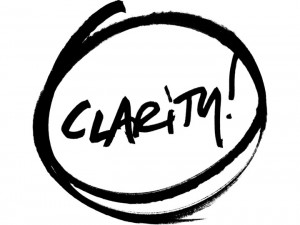Clarity, culture & contribution
 Often when we approach a new leadership assignment, we want to make a big splash fast. We reason that if we can quickly make some significant contributions—a few noticeable wins—we can build equity, which can be used as a resource for future challenging decisions.
Often when we approach a new leadership assignment, we want to make a big splash fast. We reason that if we can quickly make some significant contributions—a few noticeable wins—we can build equity, which can be used as a resource for future challenging decisions.
But that course of action may actually backfire.
Though we may have been given a leadership post to contribute to the greater good, trying to make that impact too soon can create confusion if we don’t really know the thing to which we are contributing. We may think we have a win, but if we are not aware of the unintended consequences of our actions, what we think of as a “W” can really be an “L”.
The other challenge with creating quick wins is that you may see it that way, but the rest of the team does not. Unlike sports, where keeping score is clear and simple, knowing when you are getting ahead in organizational leadership requires that you understand how your decisions and actions are perceived in a particular culture.
In other words, if the culture is broken, and there is a lack of clarity, our contribution may not be the victory we think it is.
One of the marks of a great leader is great patience when it’s necessary. And moving towards a point where our contribution will be more than a temporary gain may require two prerequisite intentional steps.
1. Clarity: We might have a very clear picture of what it is we want to see and why we want to see it, but if our teams are not on the same page, they might think we are taking steps backwards while we think we are zooming ahead. Ultimately even if we are “right” and they are “wrong” it won’t matter, because our ability to lead and make an impact will be severely compromised by those who don’t understand what we are attempting.
Much has been written about clarity as a leadership mandate, and in my opinion there is no way to overestimate how important this is. When your whole team is genuinely on the same page (not we just think they are clear) about what they are working to do, why they are doing it, and how they are planning to get there, you have taken your first step towards making an important contribution.
2. Culture: When there is organizational clarity and everyone understands (even if they don’t necessarily agree with) what is going on, you can then start to build or repair a culture of health. Unhealthy cultures are shaped in unnecessary ambiguity (there is always necessary ambiguity, by the way) and unmet expectations. Healthy culture is built when everyone knows the score, knows how to score, and knows the strategy and values that are being agreed upon as the game is being played.
3. Contribution: Finally you are ready to contribute. It may seem like a silly progression to have to walk through, so here is a silly analogy to go along with it:
If you stepped onto a field where everyone thought they were playing soccer, but you understood that it’s an american football team you are supposed to be coaching, you couldn’t just tell people to start making touchdowns. Even if they did it, they wouldn’t feel like they were winning at all and would become discouraged.
• First there needs to be clarity regarding what is supposed to happen (as well as why and how)…
• Then there needs to be a team culture built around accomplishing the agreed upon goals…
• After that the contributions can be and will be celebrated for the good things that they are.
It may require patience, but the long term wins will be much more effective than a couple of short term ones could ever be.
